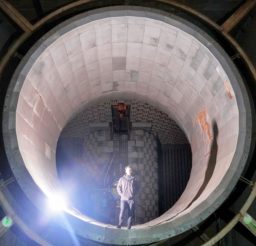Abandoned Ukraine: Duga Radar- Chernobyl Exclusion Zone | Urbex
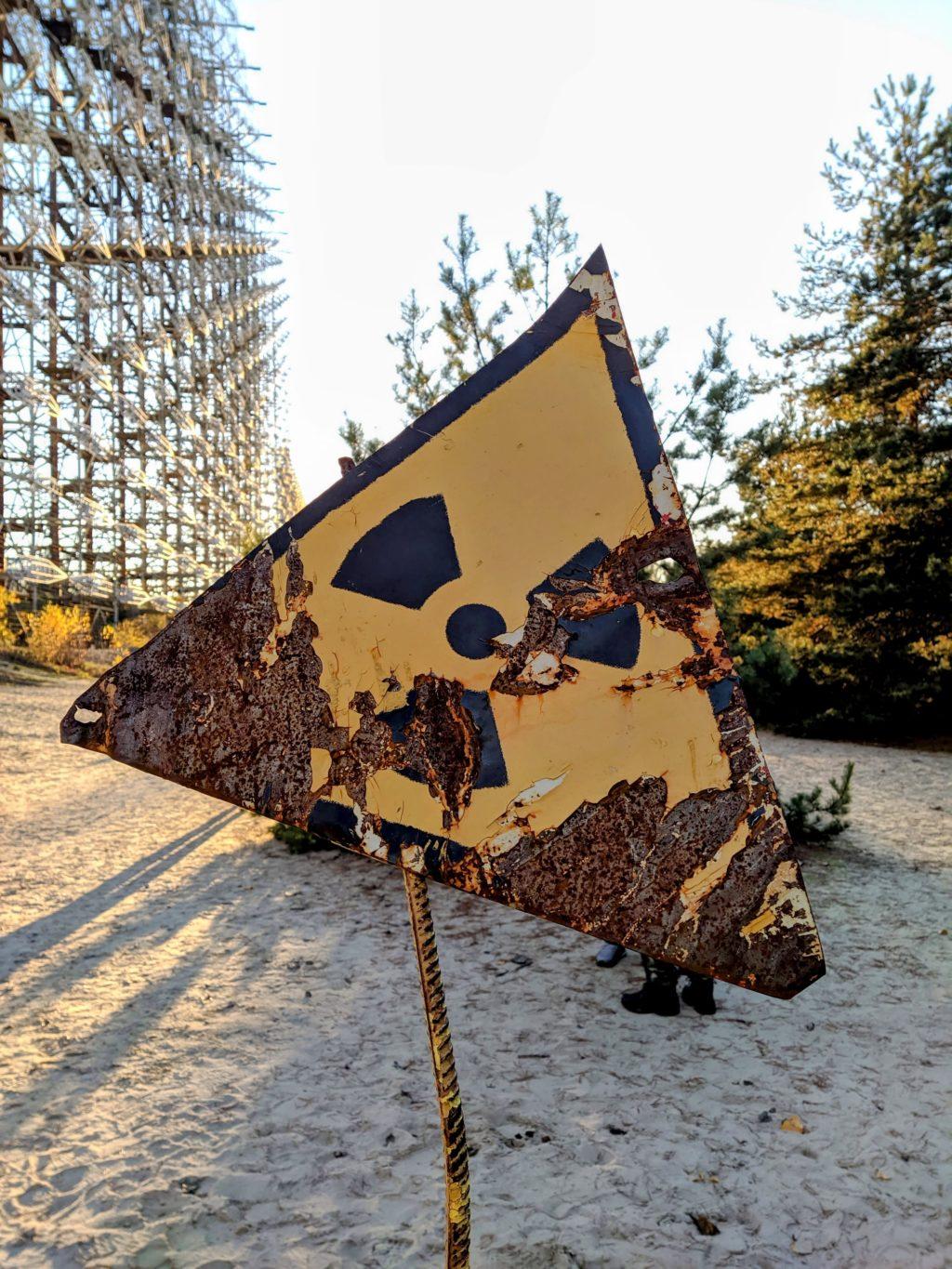
Once a closely guarded secret and one of the most powerful military operations of the Soviet Union, this dilapidated metal structure juts out of the post-apocalyptic landscape of the Chernobyl Exclusion Zone. Standing an impressive 150 metres tall and stretching across 700 metres, the signal emitted from Duga was so powerful that it was picked-up as a strange noise on shortwave radios across the globe. The repetitive tapping sounded like a helicopter or a woodpecker, leading to Duga being nicknamed “The Russian Woodpecker” by amateur radio operators.
In the midst of Cold War tensions, conspiracy theories that this sinister noise was in fact mind or weather control gained traction in the west. Some claimed that the mysterious Russian signal could alter human behaviour and destroy brain cells. The true source and nature of the noise wasn’t confirmed until after the fall of the Soviet Union, though to this day many of the details of this operation are shrouded in secrecy.
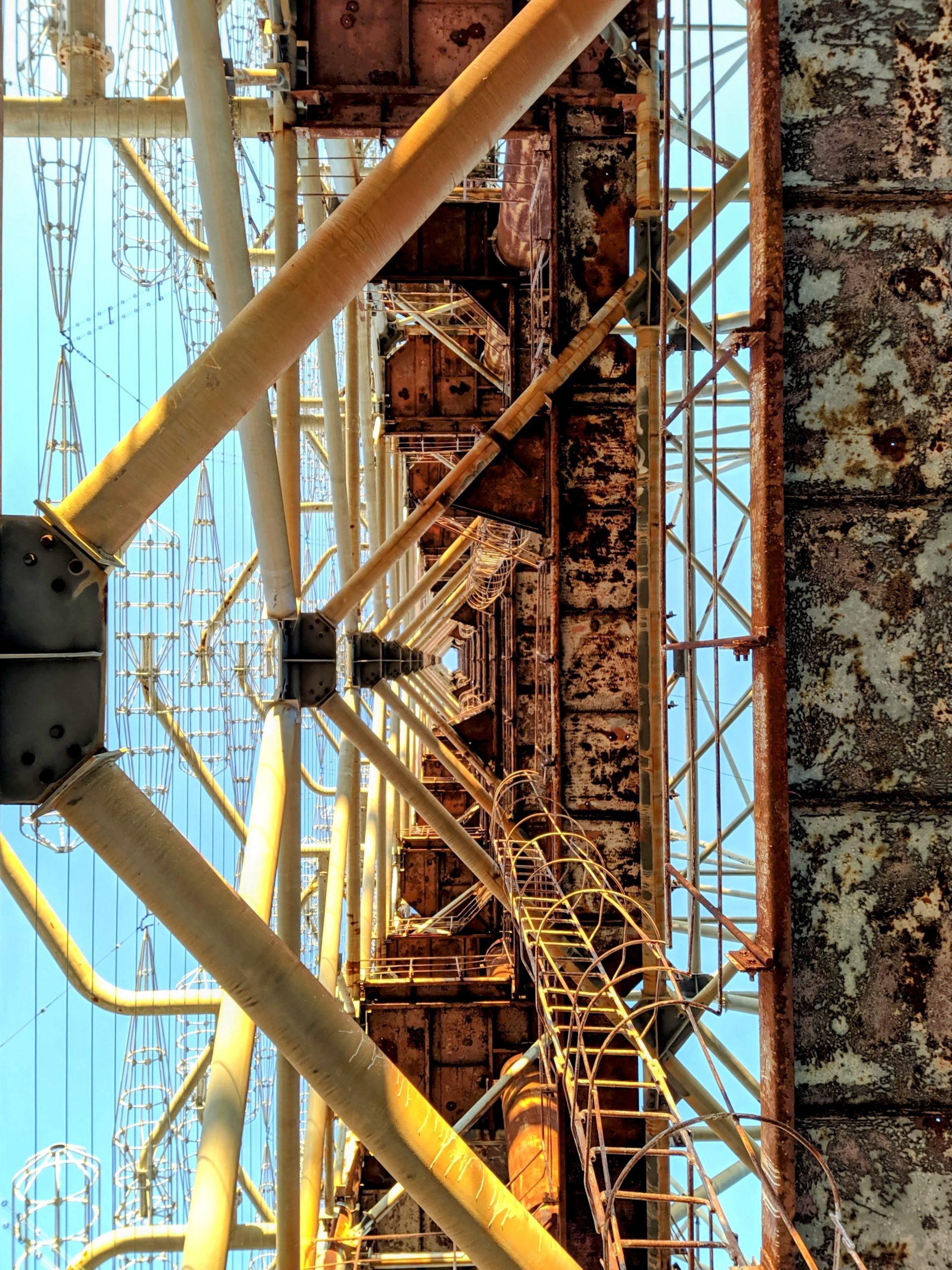
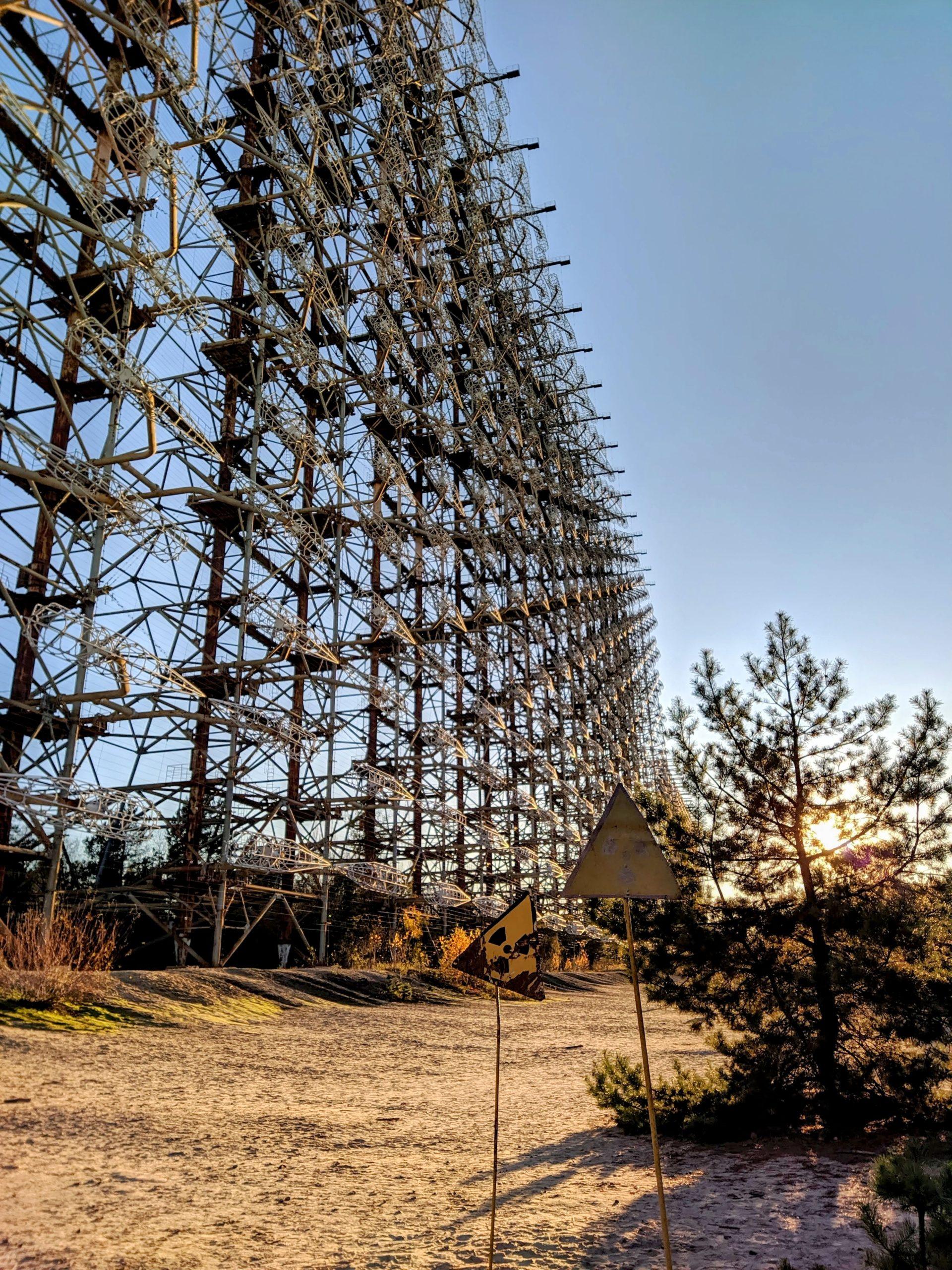
Duga, which translates from Russian as arc or curve, was a Soviet over-the-horizon (OVH) radar system. This system was operational from 1976 until 1989, and was part of the missile defence early warning radar network. The Duga-1 array within the Chernobyl exclusion zone was one of two operational Duga radars; the other (Duga-2) was in Eastern Siberia. The Chernobyl antenna was pointed towards the USA, who Russia believed was most likely to launch intercontinental ballistic missiles. Duga-2 was pointed East, towards China and Japan, and could also detect US missiles launched from the Pacific Ocean.
What was Duga for?
This superstructure would give advanced warning of intercontinental ballistic missiles launched from the west, a very real threat during the Cold War. It was designed to detect these missiles within three minutes of their launch. It would take a ballistic missile around 20-30 minutes to reach the USSR, so this warning would have allowed the Soviets to retaliate and fire back at the West.
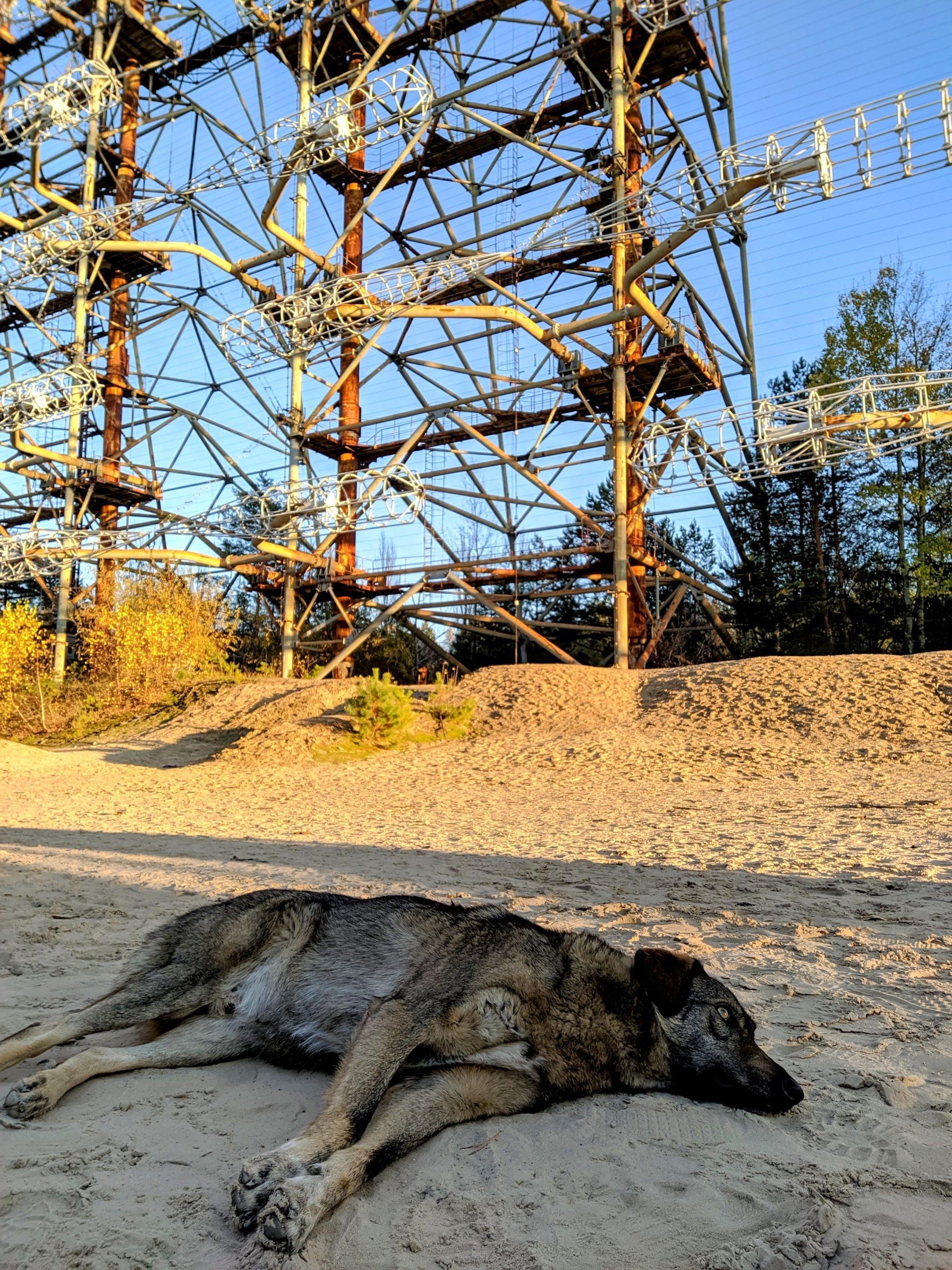
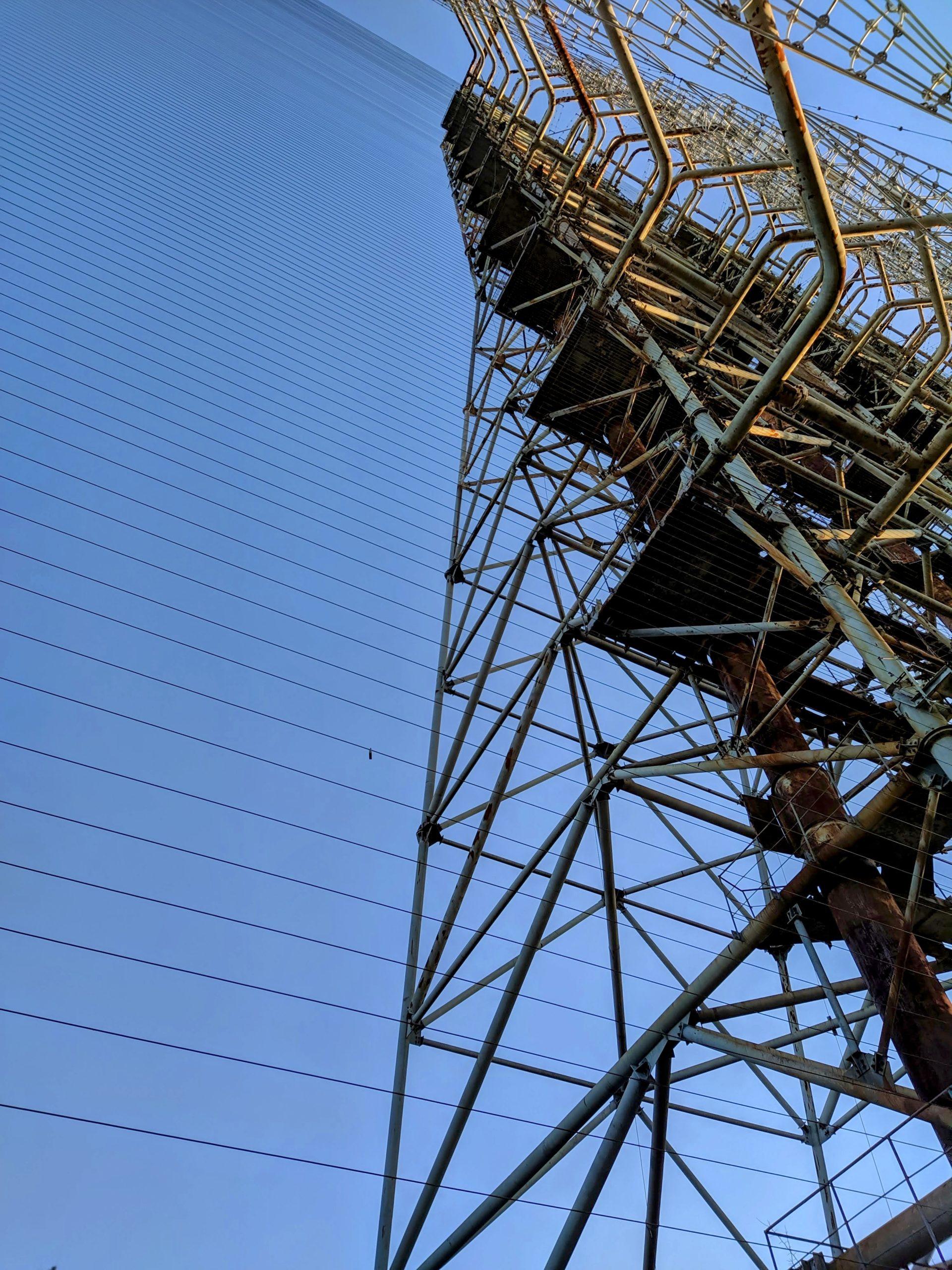
The radars were protected by their own air defence systems to defend them during a conflict. Each site had a transmitter to send out the signal. In order to “see” over the horizon, the signal was bounced off the Earth’s ionosphere (part of the upper atmosphere). This signal was then picked back up by a receiver, located around 40km away from the transmitter. As you can see, the receivers were huge, in order to detect the returning signal, and any potential missiles. Duga required an extremely large amount of energy and powerful technology to operate. It cost twice as much to build as the nearby Chernobyl nuclear power plant. It is speculated that the structure was built so close to Chernobyl in order to provide the required energy.
Why was Duga Abandoned?
The technology was complex and not thought to be particularly effective (information on this varies greatly depending on the source). The system was undergoing continuous tweaks and improvements, but its fate was sealed on 26th April 1986, when an explosion devastated the Chernobyl Nuclear Power Plant. As a result of the radioactive contamination, the site was closed and its workers evacuated. All documents were either destroyed or achieved in Moscow, either hidden or lost to this day. The complex was left in standby, however it soon became clear that it would not be possible to operate a complex Radar system from within a nuclear exclusion zone.
Today, the Duga array in Chernobyl are the last standing remains of the Duga system, ironically having been protected by the very disaster that ended its useful life.
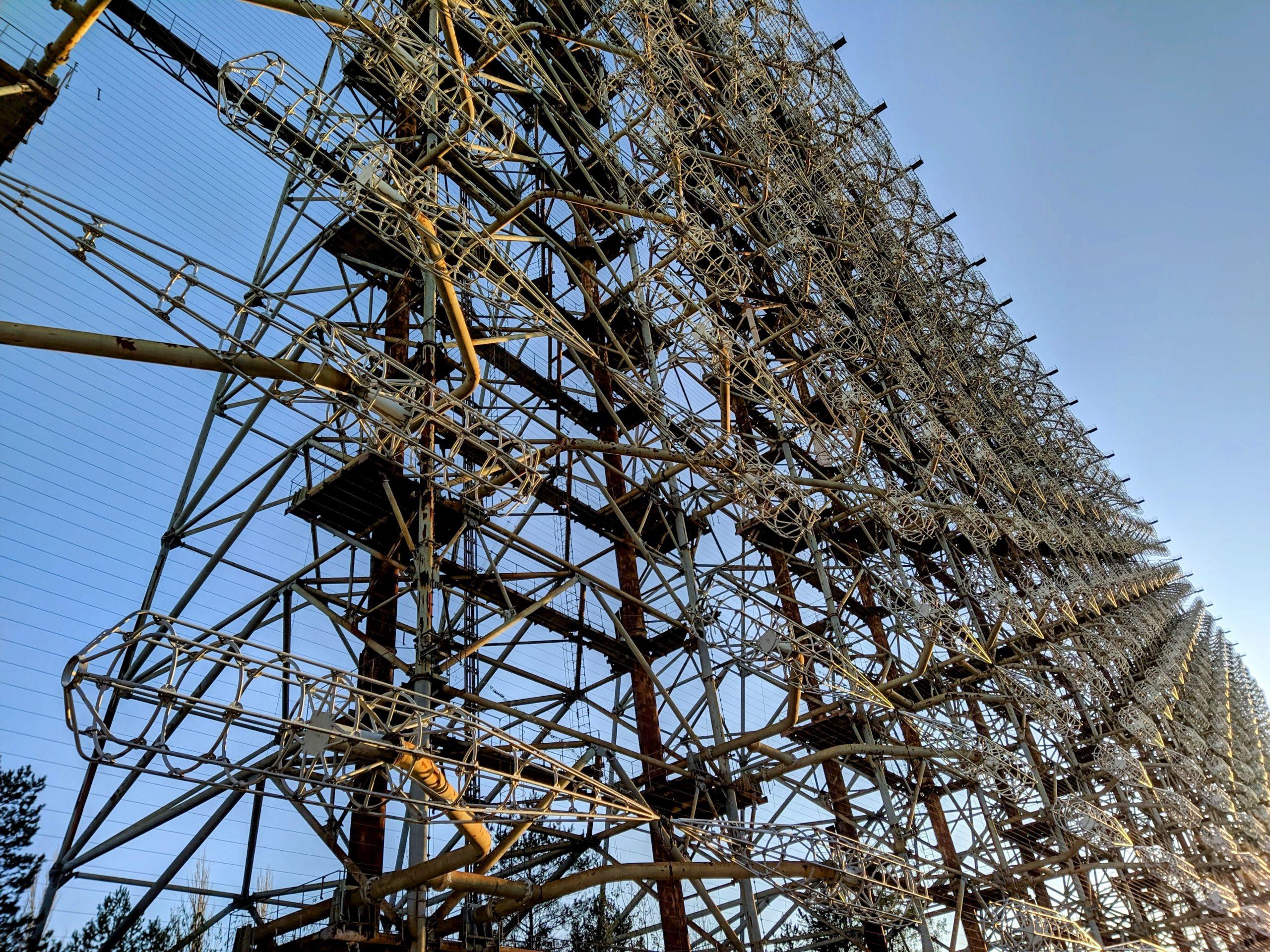
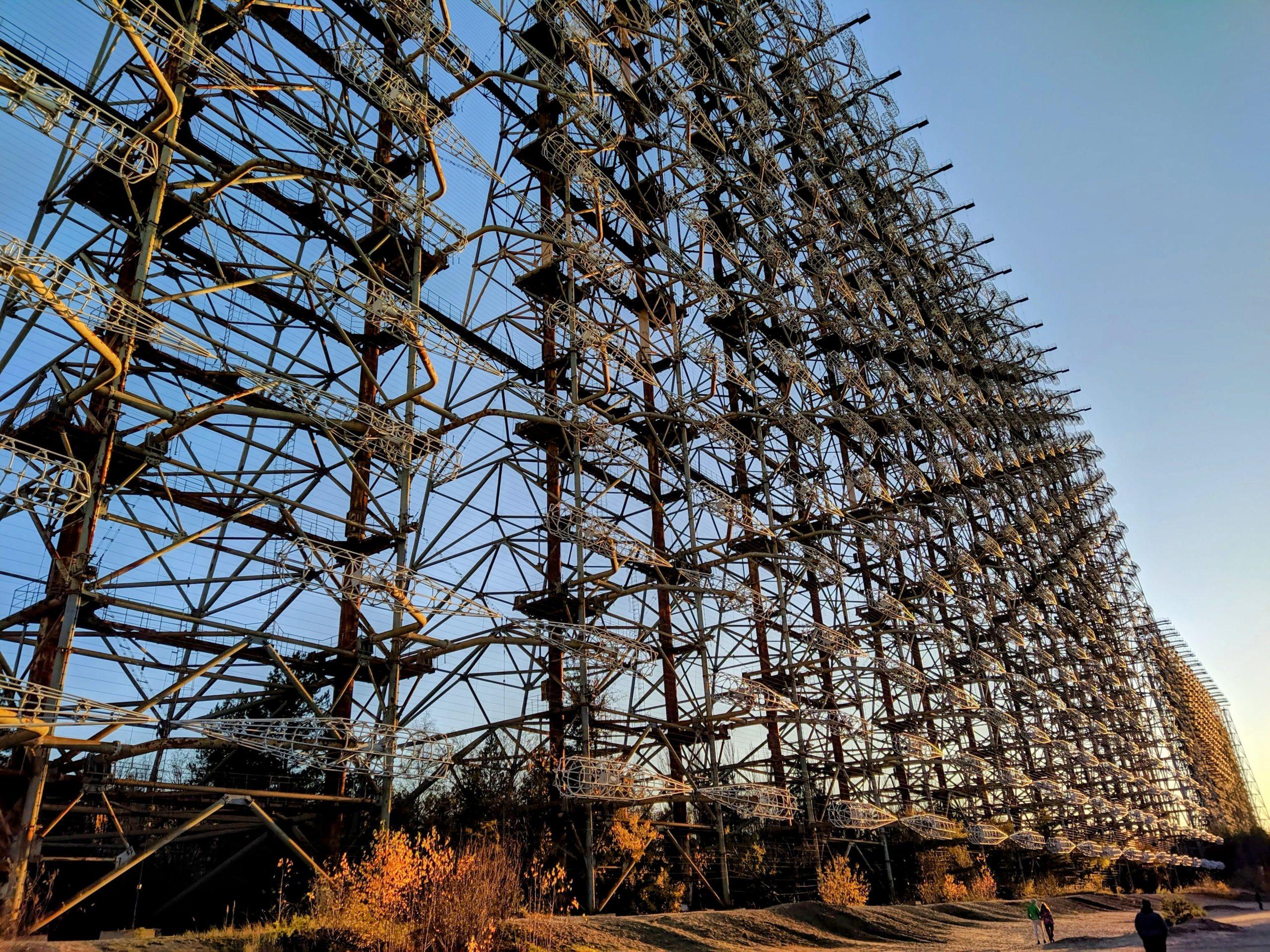
Last Updated on 19 December 2024 by Michael

